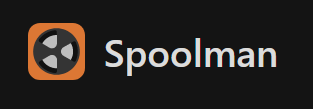English below:
Neulich bin ich durch Zufall im Discord vom Mainsail-Projekt auf “Spoolman” gestoßen. Ein Klipper-Plugin, von dem ich bis dato noch nie was gehört habe, welches dazu gedacht ist endlich ein wenig Ordnung in sein vorhandenes Filament zu bringen.
In einer Datenbank werden Hersteller, Farbe, Art und Gewicht Deiner Filamente getrackt und mit Hilfe des Klipper-Plugins wird der Verbrauch direkt subtrahiert. So kannst Du weitestgehend genau sagen, wie viel Du noch von Filament X hast und kannst entscheiden, ob Dein nächster Druck damit noch möglich ist oder ob Du lieber nachbestellen solltest oder eben in einer anderen Farbe drucken möchtest.
Das Projekt findest Du hier: https://github.com/Donkie/Spoolman
… und es lässt sich sehr leicht anhand der Anleitung dort installieren.
Ich habe es als Docker-Version installiert, da ich auf einem meiner Hosts eh mehrere Docker-Projekte laufen habe.
Und so sieht die docker-compose.yml aus:
version: '3.8'
services:
spoolman:
image: ghcr.io/donkie/spoolman:latest
restart: unless-stopped
volumes:
# Mount the host machine's ./data directory into the container's /home/ap>
- type: bind
source: ./data # This is where the data will be stored locally. Could a>
target: /home/app/.local/share/spoolman # Do NOT change this line
ports:
# Map the host machine's port 7912 to the container's port 8000
- "7912:8000"
environment:
- TZ=Europe/Berlin # Optional, defaults to UTCWenn man alles also eingerichtet hat, beginnt man damit seine Filamente zu erfassen.
Ich rate dazu zunächst mit den Herstellern anzufangen und sich dann über die einzelnen Filamentsorten bis hin zur einzelnen Spule zu arbeiten.
Um auch die Dichte der jeweiligen Filamentsorten richtig zu erfassen, emofehle ich diese Webseite:
https://www.simplify3d.com/resources/materials-guide/properties-table/
Dort steht unter Density für die jeweilige Sorte auch der entsprechend richtige Wert. Bei PLA wäre das zum Beispiel: 1,24 g/cm³
Am Ende sieht es dann in etwa so aus:

Und wie man sehen kann, habe ich überhaupt kein grünes PETG Filament. 😀
Im nächsten Teil werden wir dann mal sehen, wie das Ganze dann in Klipper integriert wird und wie einfach es dann ist selbst bei einem Filamentwechsel während des Drucks die entsprechenden Spulen auszuwählen.
English:
[Part 1] Spoolman – track your filament… do I still have some green PETG left?
I recently came across “Spoolman” by chance in the Mainsail project’s Discord. A Klipper plugin that I had never heard of before, which is designed to finally bring some order to your existing filament.
The manufacturer, color, type and weight of your filaments are tracked in a database and the consumption is subtracted directly with the help of the Klipper plugin. This way you can tell exactly how much of filament X you have left and can decide whether your next print is still possible with it or whether you should rather reorder or print in a different color.
You can find the project here: https://github.com/Donkie/Spoolman
… and it is very easy to install using the instructions there.
I installed it as a Docker container because I have several Docker projects running on one of my hosts anyway.
And this is what docker-compose.yml looks like:
version: '3.8'
services:
spoolman:
image: ghcr.io/donkie/spoolman:latest
restart: unless-stopped
volumes:
# Mount the host machine's ./data directory into the container's /home/ap>
- type: bind
source: ./data # This is where the data will be stored locally. Could a>
target: /home/app/.local/share/spoolman # Do NOT change this line
ports:
# Map the host machine's port 7912 to the container's port 8000
- "7912:8000"
environment:
- TZ=Europe/Berlin # Optional, defaults to UTCOnce you have set everything up, you can start to record your filaments.
I recommend starting with the manufacturers first and then working your way through the individual filament types right down to the individual spools.
To correctly record the density of the respective filament types, I recommend this website:
https://www.simplify3d.com/resources/materials-guide/properties-table/
There, under Density, you will also find the correct value for the respective type. For PLA, for example, this would be: 1.24 g/cm³
In the end, it looks something like this:

And as you can see, I do not have any green PETG filament at all. 😀
In the next part, we will see how the whole thing is integrated into Klipper and how easy it is to select the appropriate spools even when changing filament during printing.


3 thoughts on “[Teil 1] Spoolman – track your filament… hab ich noch grünes PETG?”